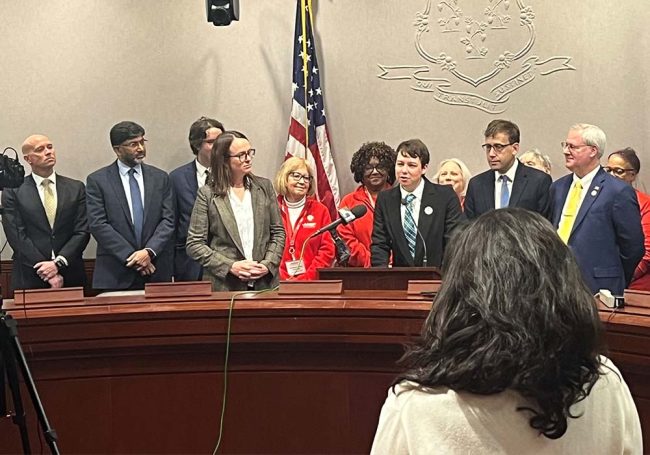- Between FY 2019 and FY 2022, Connecticut hospital drug expenses grew by $689 million. In the three years combined, following the start of the pandemic, Connecticut hospitals spent a collective $1.6 billion above FY 2019 levels on supplies and drugs. [1]
- In FY 2022 [2], hospitals faced a 17% increase in the cost of drugs over the year before, which the Office of Health Strategy (OHS) described as one of the reasons the “growth in operating expenses far exceeded the growth in operating revenue” for hospitals.
- In FY 2023, drug expenses for Connecticut hospitals increased another 10% — a total of $249 million — outpacing the Northeast/Mid-Atlantic and national medians.
Pharmaceutical Costs
In Connecticut, hospitals know all too well the impact of the steadily rising cost of obtaining and supplying prescription drugs.
Drug expenses for Connecticut hospitals increased by 10% — a total of $249 million — in 2023, outpacing the Northeast/Mid-Atlantic and national medians. Patient acuity and average length of stay have remained relatively flat in Connecticut, indicating the growth in drug costs is principally related to increased drug prices — prices over which hospitals have little control.
Despite facing negative operating margins exacerbated by rising costs, including drug expenses, Connecticut hospitals continue to offer essential services that expand healthcare access and advance health equity.
Programs such as the federal 340B Drug Pricing Program support this ongoing work and must be protected.
What is the 340B Drug Pricing Program?
The 340B Drug Pricing Program requires pharmaceutical manufacturers participating in Medicaid to sell outpatient drugs at discounted prices to qualifying healthcare organizations, such as hospitals and federally qualified health centers. By enabling eligible hospitals to purchase some drugs at a discount, this program helps shield hospitals from even greater financial strain.
Hospitals reinvest the savings derived from these discounts into initiatives that improve access to healthcare services, including critical financial assistance policies that provide free and reduced-cost care to low-income, uninsured, and underinsured patients.
Preserving the 340B Drug Pricing Program – Caring for Vulnerable Populations
It is vital that stakeholders work together to preserve the 340B program and protect the free and reduced-cost care and access provided by Connecticut hospitals. Building regulatory roadblocks that jeopardize savings related to the program would also jeopardize hospitals’ ability to maintain and augment these critical services.
In 2023, the 340B program helped Connecticut hospitals and health systems contribute $3.5 billion in community health investments, this includes $1.43 billion in unreimbursed care for low-income Medicaid beneficiaries, $1.38 billion in unreimbursed care for Medicare beneficiaries, and nearly $271 million in uncompensated care (charity care/bad debt).
And every year, the dollars saved as a result of 340B discounts are put back into services like free screenings for breast, skin, lung, and prostate cancers; transportation for patients to and from medical appointments; and vans that go into the community to provide pediatric dental services, to name just a few examples.
Examples of Hospitals’ Community Health Investments
Drug Costs Have Been Straining Hospitals for Years
Rising operating expenses — including the cost of drugs, medical equipment, and supplies — continue to hit Connecticut harder than other states. At the same time, Medicaid and Medicare reimbursement rates are not keeping pace with the cost of care, and hospitals are shouldering the financial burden. These year-over-year losses are unsustainable.
Addressing Climbing Costs With Actionable Solutions
Connecticut hospitals and health systems are members of the state’s bipartisan, bicameral Prescription Drug Task Force. The task force convenes a coalition of legislators, healthcare providers, pharmacists, pharmaceutical industry experts, patients, and consumer advocates to tackle the rising costs of medications and improve access to prescription drugs and pharmacy care in Connecticut.




